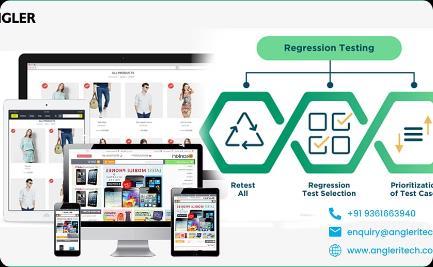Introduction to Functional Automation Testing
Functional automation testing involves automating the validation of software functionalities to enhance testing efficiency and accuracy.



Functional automation testing involves automating the validation of software functionalities to enhance testing efficiency and accuracy.



Functional automation testing refers to the use of software tools to execute pre-scripted tests on software applications. It involves validating the functionality of various features and components efficiently.
This approach allows for repetitive testing scenarios to be automated, reducing manual effort and ensuring consistent and reliable outcomes.
Efficiency
Automation reduces testing time and effort, leading to faster release cycles.

Reusability
Test scripts can be reused for different builds, saving time and resources.
Accuracy
Avoids human errors, ensuring consistent and reliable test results.
Coverage
Enables thorough testing of large and complex systems, improving quality assurance.



Selenium Selenium is a widely used opensource tool for automating web browsers.
Appium Appium is an open-source tool for automating native, mobile web, and hybrid applications.

Cucumber
Cucumber is a tool for running automated acceptance tests written in a behavior-driven development (BDD) style.

Scalability
Ensure that the automation framework can scale with the growing number of test cases and changing requirements.
Consider the ability to run tests in parallel to save time and increase efficiency.
Maintenance Plan for regular updates and maintenance to keep automated tests aligned with application changes. Establish clear version control and documentation practices for the testing codebase.
Integration
Verify seamless integration with other tools and systems within the software development lifecycle. Ensure compatibility with continuous integration and delivery pipelines for efficient testing and feedback loop.
1 Complex Test Maintenance
Updating tests for application changes
2 Dependency on GUI Changes
Tests may break with UI modifications

3 Data-Intensive Testing
Managing large sets of test data
4
Integration with Continuous Integration
Integration
Ensuring seamless CI/CD integration
Functional automation testing presents challenges such as complex test maintenance due to frequent application updates, dependency on GUI changes impacting test outcomes, managing large sets of test data, and seamlessly integrating with continuous integration practices.
• Clear Objectives: Define clear goals and objectives for each automated test to ensure relevance and effectiveness.
• Modular and Maintainable: Design tests in a modular and maintainable way to facilitate updates and reduce maintenance efforts.
• Robust Assertions: Utilize robust assertions to accurately validate expected outcomes and minimize false positives/negatives.






Automated functional testing ensures seamless navigation, transaction processing, and secure payment gateways on ecommerce websites.
Functional automation testing validates user interactions, data accuracy, and performance across various mobile platforms and devices.
Automated testing of APIs checks data integrity, functionality, and interoperability to ensure smooth integration with thirdparty systems.

An investment firm reduced regression testing time by 70% using automation, resulting in faster software releases.

A healthcare provider improved patient data accuracy by 85% with automated testing, enhancing treatment outcomes.
An online retailer achieved a 60% reduction in production incidents through automated testing, ensuring a seamless shopping experience.



Improved time-to-market
Rapid feedback leading to faster product releases

Functional automation testing enables comprehensive test coverage by automating end-to-end scenarios. It also efficiently detects bugs, leading to rapid bug identification and reporting, ultimately improving timeto-market with faster product releases.